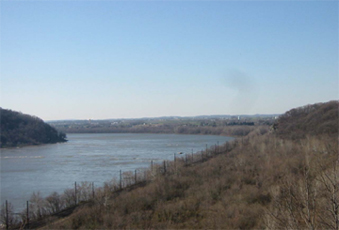|
Over the last five years, several NSF-supported MS students and a USGS-supported post-doctoral associate have worked with Bierman and used in-situ produced 10-Be and 26-Al to understand the rate and spatial distribution of erosion in the Appalachian Mountains. We’ve completed our work in the Susquehanna drainage basin and the Great Smoky Mountains National Park and have begun work in Shenandoah National Park and along the Blue Ridge Escarpment along the North Carolina-Virginia border.
Analyzing 10-Be in quartz extracted from stream and river sediments, we find that erosion rates are most closely tied to slope and are overall, quite low, averaging only tens of meters per million years in most of the basins we have sampled so far. In the Great Smoky Mountains, erosion appears to have been steady over millions of years. In the Susquehanna Basin, erosion rates differ over time and space. Our data suggest both the effect of geologic and human history. For example, in the Piedmont, all basins have similar long-term erosion rates but several basins that are intensively farmed have very high suspended-sediment loads, suggesting rapid recent erosion. Erosion rates in the near-coast Piedmont are low and uniform, suggesting that the landscape has adjusted to changes in the river dynamics that occurred many millions of years ago whereas in the distant Appalachian Plateau, the landscape is still responding.
This research has been supported by the USGS, NSF and DoD.
Relevant Publications:
- Matmon, A., Bierman, P.R., Larsen, J., Southworth, S., Pavich, M., and Caffee, M., (2003) Temporally and spatially uniform rates of erosion in the southern Appalachian great Smoky Mountains, Geology. v. 31; no. 2; p. 155-58
- Matmon, A., Bierman, P. R., Larsen, J., Southworth, S., Pavich, M., Finkel, R., and Caffee, M. (2003) Erosion of an Ancient Mountain Range, the Great Smoky Mountains, North Carolina and Tennessee, American Journal of Science. v. 303, n. 9, p. 817-855.
|




